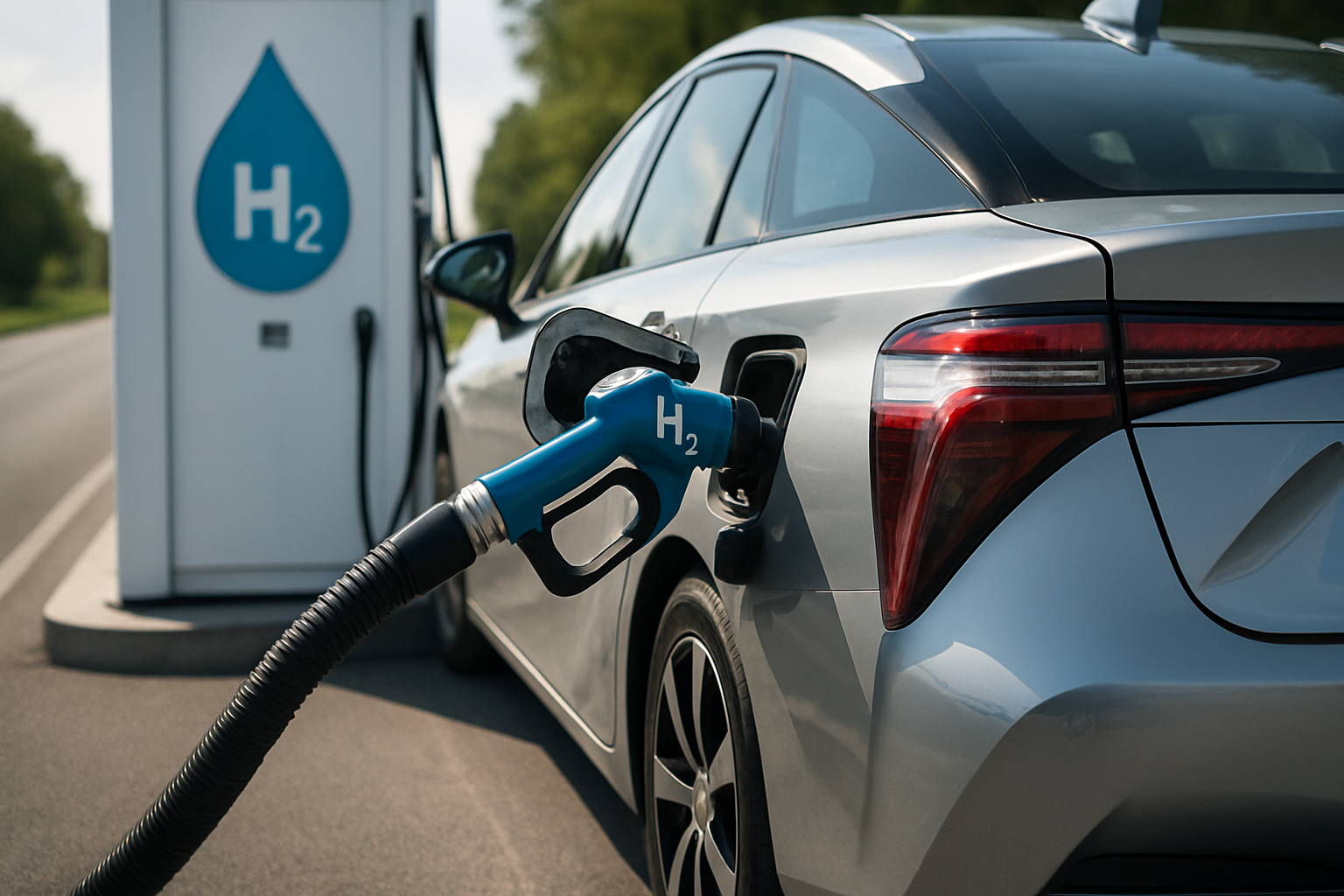Fuel Cell Vehicles: The Silent Revolution in Automotive Propulsion
The automotive world stands on the cusp of a paradigm shift, with fuel cell vehicles (FCVs) emerging as a promising alternative to traditional combustion engines. This groundbreaking technology harnesses the power of hydrogen to deliver clean, efficient transportation that could reshape our roads and skies. As we delve into the intricacies of fuel cell propulsion, we'll explore how this innovation is poised to transform the automotive landscape and potentially redefine our relationship with personal mobility.

The Science Behind Fuel Cell Technology
At the heart of every fuel cell vehicle lies a marvel of electrochemistry: the fuel cell stack. This ingenious device converts hydrogen gas into electricity through a process known as reverse electrolysis. Hydrogen molecules are split into protons and electrons, with the electrons forced through an external circuit to generate electricity. The protons, meanwhile, pass through a special membrane and combine with oxygen from the air to form water—the only byproduct of this clean energy conversion.
The fuel cell stack is composed of hundreds of individual cells, each contributing to the overall power output. These cells are stacked together, hence the name, and work in concert to provide the necessary electricity to drive the vehicle’s electric motor. The process is continuous as long as hydrogen is supplied, allowing for extended range and quick refueling, addressing two major concerns associated with battery-electric vehicles.
Infrastructure Challenges and Solutions
One of the most significant hurdles facing the widespread adoption of fuel cell vehicles is the lack of hydrogen refueling infrastructure. Unlike gasoline stations, which are ubiquitous in most developed countries, hydrogen fueling stations are still relatively scarce. This chicken-and-egg problem has slowed the rollout of FCVs, as consumers are hesitant to purchase vehicles they can’t easily refuel.
However, governments and private companies are increasingly investing in hydrogen infrastructure. Countries like Japan, Germany, and South Korea are leading the charge, with ambitious plans to build extensive networks of hydrogen stations. In the United States, California has been at the forefront, with dozens of stations already operational and many more in the planning stages. As the infrastructure grows, it’s expected to catalyze FCV adoption, creating a positive feedback loop that could accelerate the technology’s proliferation.
Performance and Efficiency: A New Paradigm
Fuel cell vehicles offer a unique combination of performance characteristics that set them apart from both internal combustion engine vehicles and battery-electric cars. The instant torque provided by electric motors, coupled with the long range and quick refueling of hydrogen, creates a driving experience that many enthusiasts find appealing.
FCVs are inherently more efficient than their gasoline counterparts, with fuel cells capable of converting up to 60% of the energy in hydrogen to electricity. This efficiency translates to lower energy consumption and reduced operating costs. Moreover, the simplicity of the drivetrain—with fewer moving parts compared to internal combustion engines—promises enhanced reliability and reduced maintenance requirements.
Environmental Impact and Sustainability
The environmental credentials of fuel cell vehicles are compelling. With water vapor as the only tailpipe emission, FCVs offer a path to truly zero-emission transportation. However, the environmental impact of FCVs extends beyond the vehicle itself to the production and distribution of hydrogen fuel.
Currently, most hydrogen is produced from natural gas through a process called steam reforming, which does generate carbon emissions. However, there’s growing interest in green hydrogen production methods, such as electrolysis powered by renewable energy sources like wind and solar. As these clean production methods scale up, the overall environmental footprint of fuel cell vehicles is expected to diminish significantly, potentially offering a more sustainable transportation solution than even battery-electric vehicles in some scenarios.
The Road Ahead: Challenges and Opportunities
As with any emerging technology, fuel cell vehicles face several challenges on the path to widespread adoption. Cost remains a significant barrier, with fuel cell systems and high-pressure hydrogen tanks contributing to higher vehicle prices compared to conventional cars. However, as production scales up and technology advances, costs are expected to decrease, making FCVs more accessible to the average consumer.
Another area of focus is the durability and longevity of fuel cell stacks. While significant progress has been made, further improvements in membrane and catalyst technologies are needed to extend the lifespan of these critical components and reduce replacement costs.
Despite these challenges, the potential of fuel cell vehicles is immense. Beyond passenger cars, the technology shows promise for heavy-duty applications like long-haul trucking, where the quick refueling and long range of FCVs offer distinct advantages over battery-electric alternatives. Moreover, the versatility of hydrogen as an energy carrier opens up possibilities for integration with renewable energy systems, potentially revolutionizing not just transportation but the entire energy landscape.
As we stand on the brink of this automotive revolution, it’s clear that fuel cell vehicles represent more than just a new propulsion technology. They embody a vision of clean, efficient, and sustainable transportation that could reshape our cities, our environment, and our way of life. While challenges remain, the silent hum of fuel cell vehicles may very well be the sound of our automotive future.





